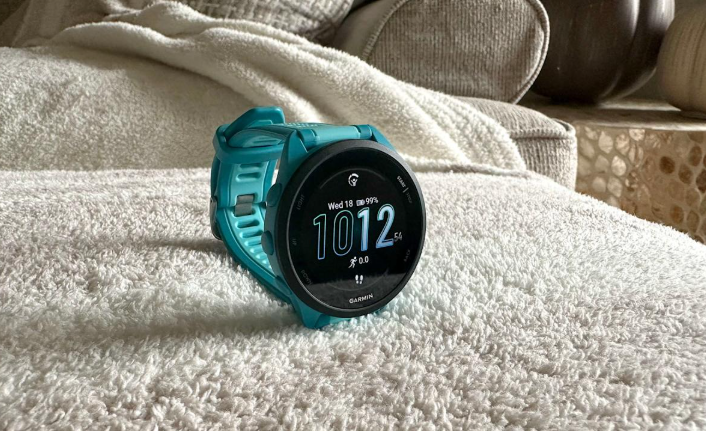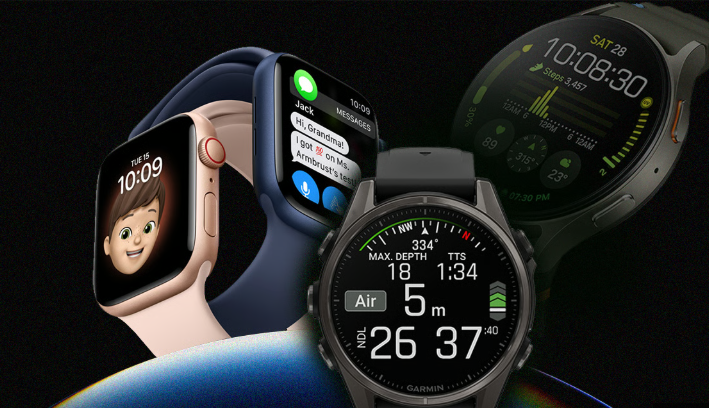In the ever-evolving landscape of wearable technology, the Fitbit vs Garmin smartwatch debate continues to dominate conversations among fitness enthusiasts, casual users, and health-conscious individuals alike. As we step into 2025, both brands offer compelling options that blend smart features with robust tracking capabilities, but which one reigns supreme? Whether you’re eyeing the sleek, user-friendly Fitbit Charge 6 or the rugged, performance-driven Garmin Venu X1, choosing between Fitbit vs Garmin smartwatch boils down to your lifestyle, goals, and priorities. This comprehensive best smartwatch guide dives deep into the pros, cons, and key differences, helping you navigate smartwatch setup, how to use a smartwatch, and more. From smartwatch troubleshooting to smartwatch maintenance, we’ll cover it all so you can make an informed decision on the ultimate portable smartwatch for your needs.
Why Choose Between Fitbit vs Garmin Smartwatch in 2025?
The Fitbit vs Garmin smartwatch rivalry has intensified this year, with both brands pushing boundaries in health monitoring, GPS accuracy, and battery efficiency. Fitbit, now under Google’s umbrella, emphasizes seamless integration with Android ecosystems and intuitive wellness tracking, making it a favorite for beginners and everyday users. On the other hand, Garmin’s legacy in GPS technology shines through in its multisport prowess, appealing to athletes who demand precision during runs, hikes, or triathlons. In 2025, expect enhanced AI-driven insights on both sides—Fitbit’s Daily Readiness Score for holistic wellness and Garmin’s Training Readiness for performance optimization.
What sets the Fitbit vs Garmin smartwatch apart? Fitbit excels in affordability and simplicity, often delivering vibrant AMOLED displays and features like ECG for heart health at a lower price point. Garmin counters with superior battery life—up to 27 days on some models—and advanced metrics like VO2 max and recovery time, ideal for serious training. Both support smartwatch safety features such as fall detection and emergency SOS, but Garmin’s rugged builds and multi-band GPS give it an edge in outdoor adventures. As you weigh options, consider compatibility: Fitbit pairs effortlessly with iOS and Android, while Garmin’s ecosystem thrives with its Connect app for deeper analytics.
For those new to wearables, the best smartwatch guide rule of thumb is this: If your focus is casual tracking and motivation, lean toward Fitbit. For data-driven athletes, Garmin is unbeatable. Explore further with our wearable guide for personalized recommendations. In the sections below, we’ll break down models, features, and practical advice on how to connect smartwatch to phone and beyond, ensuring your choice enhances your daily routine without overwhelming you.
Top Fitbit Smartwatches in 2025: Pros, Cons, and Recommendations
Fitbit’s lineup in 2025 remains accessible and innovative, focusing on wellness over elite performance. With Google’s influence, models like the Pixel Watch 3 integrate seamlessly, but traditional Fitbits hold strong for budget-conscious users. Here’s a closer look at the standout options in the Fitbit vs Garmin smartwatch comparison.
Fitbit Charge 6: The Versatile Everyday Tracker
The Fitbit Charge 6 is a powerhouse in the Fitbit vs Garmin smartwatch arena, offering a slim band design with an AMOLED display that’s perfect for all-day wear. Priced around $160, it tracks heart rate, SpO2, skin temperature, and over 40 workout modes, including auto-detection for activities like walking or elliptical. Pros include its 7-day battery life, built-in GPS for phone-free runs, and Google integrations like Maps and Wallet for quick payments. The EDA sensor for stress monitoring adds a wellness layer, making it ideal for smartwatch safety with irregular heart rhythm alerts.
Cons? GPS accuracy can lag in dense urban areas compared to Garmin’s multi-band tech, and some advanced insights require Fitbit Premium ($10/month after a 6-month trial). For smartwatch setup, download the Fitbit app, enable Bluetooth, and follow the prompts—it’s a breeze on iOS or Android. Smartwatch tips: Customize your clock face for quick glances at steps or heart rate. In our tests, it excelled at sleep tracking, providing a score and stages analysis that’s more beginner-friendly than Garmin’s detailed reports.
Google Pixel Watch 3: The Smart Evolution of Fitbit
As Fitbit’s premium offering, the Pixel Watch 3 ($350 for 41mm) bridges the gap in the Fitbit vs Garmin smartwatch debate with Wear OS 5 and Fitbit’s health suite. It boasts a brighter 2,000-nit display, Loss of Pulse Detection for emergencies, and up to 36 hours of battery (extendable to days in low-power mode). Pros: Seamless Google app access (Gmail, Maps), ECG, and Fitbit’s Daily Readiness Score for personalized coaching. It’s water-resistant to 50m and tracks over 40 sports with auto-detection.
Drawbacks include shorter battery than Garmin (no multi-day marathons here) and Android-only compatibility. How to use a smartwatch like this? Swipe for notifications, use Gemini AI for workout suggestions, and enable always-on display for readability. For smartwatch troubleshooting, restart via the crown if sync issues arise. This model’s portable smartwatch vibe shines for urban users, but athletes may miss Garmin’s depth.
Fitbit Sense 2: Health-Focused Hybrid
The Sense 2 ($250) emphasizes wellness in the Fitbit vs Garmin smartwatch matchup, with cEDA for continuous stress tracking and temperature sensing for cycle insights. Its AMOLED screen is vibrant, and 6-day battery supports all-day SpO2 and heart rate monitoring. Pros: Built-in GPS, ECG for AFib detection, and guided breathing for smartwatch safety. It’s slim and stylish, with Google Wallet integration.
Cons: No music storage (unlike older models) and Premium-locked features like advanced sleep apnea detection. Smartwatch maintenance is simple—wipe with a microfiber cloth and charge magnetically. Smartwatch tips: Use the haptic feedback for turn-by-turn navigation. While it lags Garmin in sports modes, it’s a wellness win for daily users.

Top Garmin Smartwatches in 2025: Power and Precision
Garmin dominates the athletic side of the Fitbit vs Garmin smartwatch equation, with devices built for endurance and accuracy. From trail runners to triathletes, Garmin’s 2025 lineup prioritizes data depth and ruggedness.
Garmin Venu X1: The Lifestyle Athlete’s Choice
The Venu X1 ($450) is Garmin’s sleek contender against Fitbit’s Versa, featuring a massive 2-inch AMOLED display and LED flashlight for low-light runs. Battery lasts up to 14 days, with multi-GNSS GPS for precise tracking. Pros: Body Battery for energy insights, ECG, and over 100 sports modes. It’s lightweight at 40g and water-resistant to 50m.
Cons: Pricier than Fitbit equivalents, and the interface can overwhelm beginners. How to connect smartwatch to phone? Pair via the Garmin Connect app over Bluetooth—takes minutes. Smartwatch tips: Enable Training Readiness for post-workout recovery advice. In comparisons, it outshines Fitbit in GPS reliability during hikes.
Garmin Forerunner 970: Runner’s Dream Machine
For runners, the Forerunner 970 ($600) edges out Fitbit with advanced metrics like PacePro and VO2 max estimates. Its AMOLED screen is bright, and 26-hour GPS battery handles ultras. Pros: Multi-band GPS, music storage, and Evening Report for daily summaries. Sapphire lens adds durability.
Drawbacks: Bulkier than Fitbit’s slim profiles, and no native calling (Bluetooth only). Smartwatch setup involves app sync and wrist calibration for accurate HR. Smartwatch troubleshooting: Reset if GPS drifts by toggling airplane mode. Garmin’s edge in the Fitbit vs Garmin smartwatch for pros is undeniable—deeper analytics without subscriptions.
Garmin Fenix 8: The Multisport Beast
The Fenix 8 ($1,000+) is Garmin’s flagship, with solar charging for 27-day battery and topographic maps. Pros: Dive-rated to 40m, ECG, and stamina tracking for endurance events. Titanium build ensures smartwatch safety in extremes.
Cons: Hefty price and learning curve. How to use a smartwatch? Customize data screens for races. For smartwatch cleaning, rinse after swims. It crushes Fitbit in multi-sport versatility.
Fitbit vs Garmin Smartwatch: Head-to-Head Comparison
When pitting Fitbit vs Garmin smartwatch, key differences emerge. Use this table for a quick overview:
| Feature | Fitbit (e.g., Charge 6) | Garmin (e.g., Venu X1) |
|---|---|---|
| Battery Life | Up to 7 days | Up to 14 days |
| GPS Accuracy | Good for casual use | Excellent, multi-band |
| Health Sensors | ECG, EDA, SpO2 | ECG, HRV, Body Battery |
| Price Range | $100–$350 | $300–$1,000+ |
| Sports Modes | 40+ | 100+ |
| App Insights | Wellness-focused (Premium) | Performance analytics (free) |
Fitbit wins on ease and cost, Garmin on depth and durability.
Smartwatch Setup: Fitbit vs Garmin Made Simple
Getting started with your Fitbit vs Garmin smartwatch? Both are user-friendly. For Fitbit, download the app, create an account, and pair via Bluetooth—grant permissions for notifications and location. Garmin’s Connect app requires similar steps, plus sensor calibration for optimal HR accuracy. How to connect smartwatch to phone? Ensure proximity (under 30 feet) and toggle Bluetooth. Common smartwatch troubleshooting: Restart devices if pairing fails. Fitbit’s setup is quicker for beginners, while Garmin offers more customization from the start.
Smartwatch tips: Update firmware weekly via Wi-Fi for bug fixes. For cross-ecosystem users, export data to Strava. As a portable smartwatch, both notify seamlessly, but Garmin’s haptic alerts feel more precise during workouts.
How to Use a Smartwatch: Daily Essentials from Fitbit vs Garmin
How to use a smartwatch varies slightly between Fitbit vs Garmin smartwatch. Fitbit’s interface is swipe-based for quick access to steps, heart rate, and breathing exercises—ideal for stress relief. Garmin uses buttons and touch for navigation, excelling in structured workouts with PacePro pacing. Both track sleep, but Fitbit’s score is motivational, while Garmin’s stages integrate with recovery metrics.
For fitness, start activities with a wrist raise; end for summaries. Smartwatch tips: Set goals in apps—Fitbit for 10,000 steps, Garmin for VO2 targets. Notifications buzz for calls/texts; reply via voice on premium models. In the best smartwatch guide, Garmin shines for multisport, Fitbit for casual wellness.
Smartwatch Maintenance and Cleaning: Keeping Your Device Pristine
Proper smartwatch maintenance ensures longevity in the Fitbit vs Garmin smartwatch world. For both, wipe screens daily with microfiber—avoid chemicals. Rinse bands post-sweat; Fitbit’s silicone detaches easily, Garmin’s quick-release too. Charge on non-metal surfaces to prevent wear.
Smartwatch cleaning: Soak removable bands in soapy water weekly. For sensors, expose to light for calibration. Fitbit’s magnetic chargers are travel-friendly, Garmin’s versatile. Check maintenance tips for model-specific advice. Both last years with care, but Garmin’s ruggedness handles abuse better.

Smartwatch Troubleshooting: Fixes for Fitbit vs Garmin
Even top Fitbit vs Garmin smartwatch models glitch. For battery drain, dim screens and disable unused sensors—Fitbit’s always-on mode saps power faster. If HR is erratic, ensure snug fit; Garmin’s excels here. Smartwatch troubleshooting: Force-quit apps or restart (hold side button 10 seconds). GPS issues? Calibrate outdoors. Fitbit sync lags? Toggle airplane mode. Garmin’s app crashes? Clear cache. Factory reset as last resort, backing up data first. Community forums aid model-specific fixes.
Smartwatch Safety and Tips: Prioritizing Wellness
Smartwatch safety is paramount in Fitbit vs Garmin smartwatch. Both offer fall detection and SOS—Fitbit’s Loss of Pulse auto-calls, Garmin’s LiveTrack shares location. Enable wrist detection to lock when off-wrist. Smartwatch tips: Avoid extremes; remove for contact sports. Review privacy settings. Fitbit’s stress alerts promote mindfulness, Garmin’s hydration reminders aid endurance. Integrate into routines for better sleep and activity.
For deeper smartwatch care, monitor for skin irritation and update for patches.
Conclusion: Deciding Your Fitbit vs Garmin Smartwatch Winner
In the 2025 Fitbit vs Garmin smartwatch showdown, Fitbit charms with affordability and ease for wellness seekers, while Garmin empowers athletes with unmatched precision. The Charge 6 suits casual users; the Venu X1 thrills adventurers. With solid smartwatch setup, intuitive how to use a smartwatch features, and reliable smartwatch troubleshooting, either elevates your routine. Prioritize smartwatch maintenance and smartwatch safety for longevity. Dive into our wearable guide for more. Whichever you choose, embrace the best smartwatch guide to a healthier you—your wrist awaits!